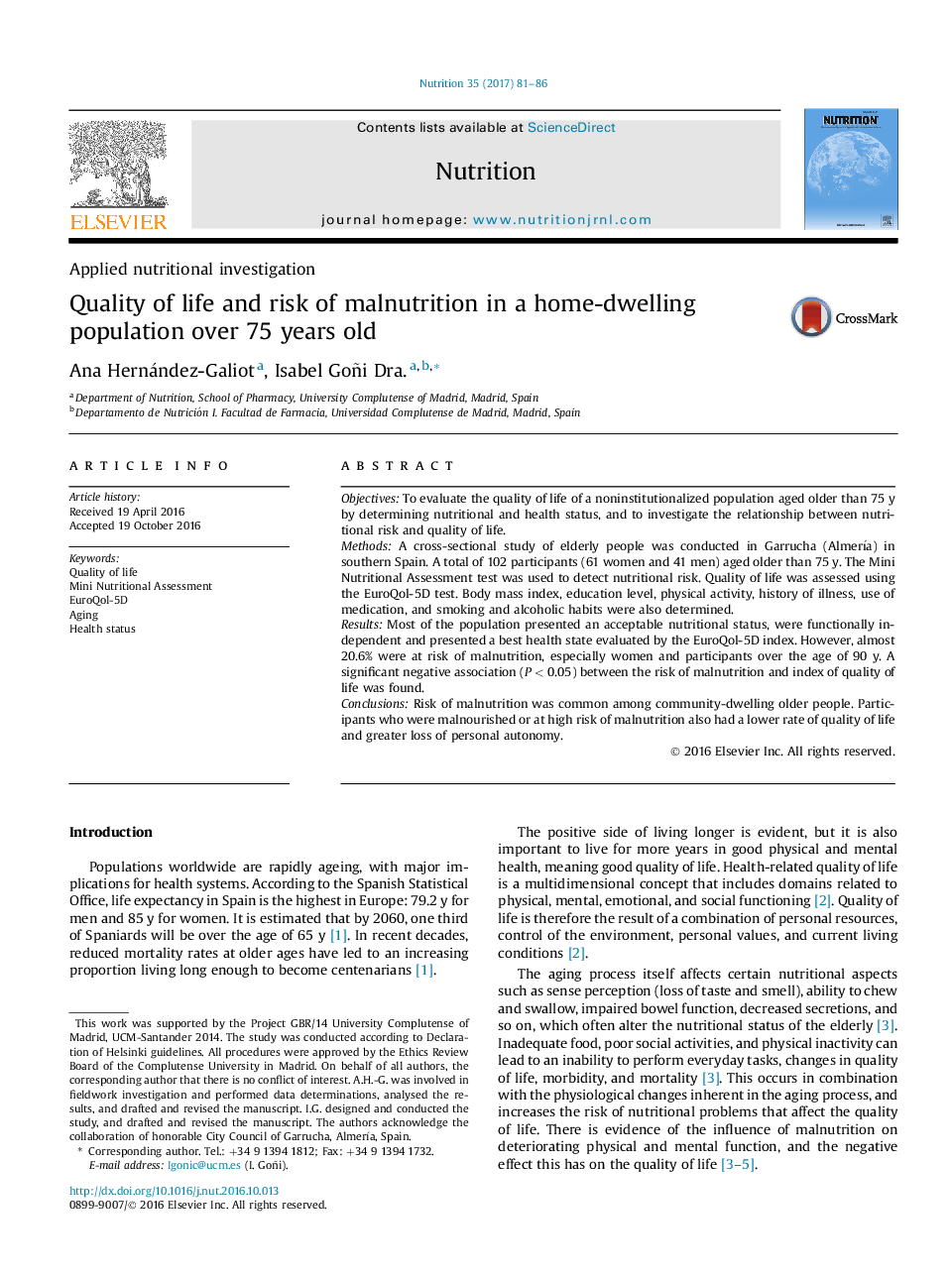| Article ID | Journal | Published Year | Pages | File Type |
|---|---|---|---|---|
| 5657007 | Nutrition | 2017 | 6 Pages |
â¢Results show the important role of nutrition and eating habits in the quality of life of the elderly population.â¢Almost 21% of study participants were at risk of malnutrition, especially women and participants older than 90 y.â¢A significant negative association between risk of malnutrition and quality of life was found.â¢These findings contribute to increasing knowledge of nutrition and the aging process.
ObjectivesTo evaluate the quality of life of a noninstitutionalized population aged older than 75Â y by determining nutritional and health status, and to investigate the relationship between nutritional risk and quality of life.MethodsA cross-sectional study of elderly people was conducted in Garrucha (AlmerÃa) in southern Spain. A total of 102 participants (61 women and 41 men) aged older than 75Â y. The Mini Nutritional Assessment test was used to detect nutritional risk. Quality of life was assessed using the EuroQol-5D test. Body mass index, education level, physical activity, history of illness, use of medication, and smoking and alcoholic habits were also determined.ResultsMost of the population presented an acceptable nutritional status, were functionally independent and presented a best health state evaluated by the EuroQol-5D index. However, almost 20.6% were at risk of malnutrition, especially women and participants over the age of 90Â y. A significant negative association (PÂ <Â 0.05) between the risk of malnutrition and index of quality of life was found.ConclusionsRisk of malnutrition was common among community-dwelling older people. Participants who were malnourished or at high risk of malnutrition also had a lower rate of quality of life and greater loss of personal autonomy.
